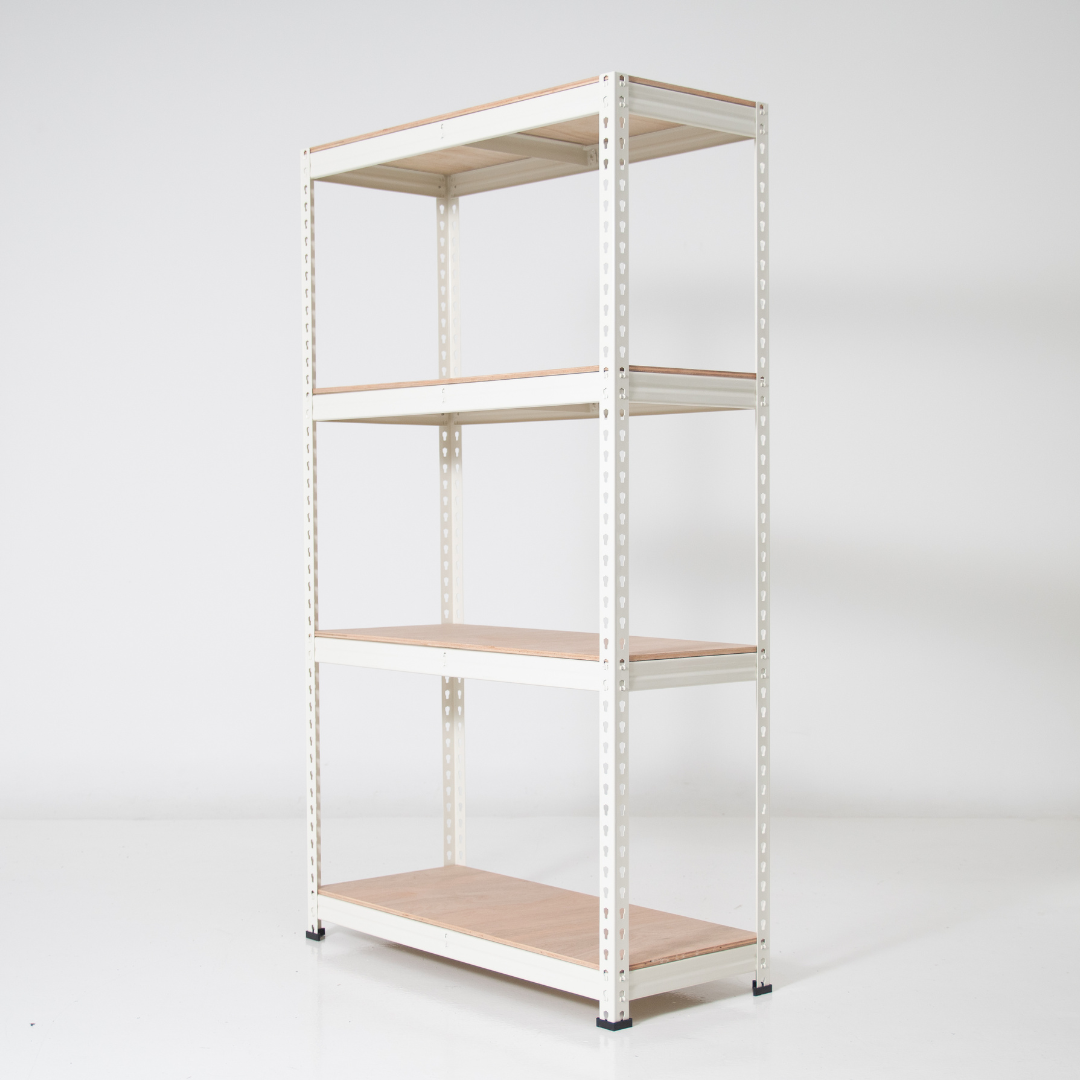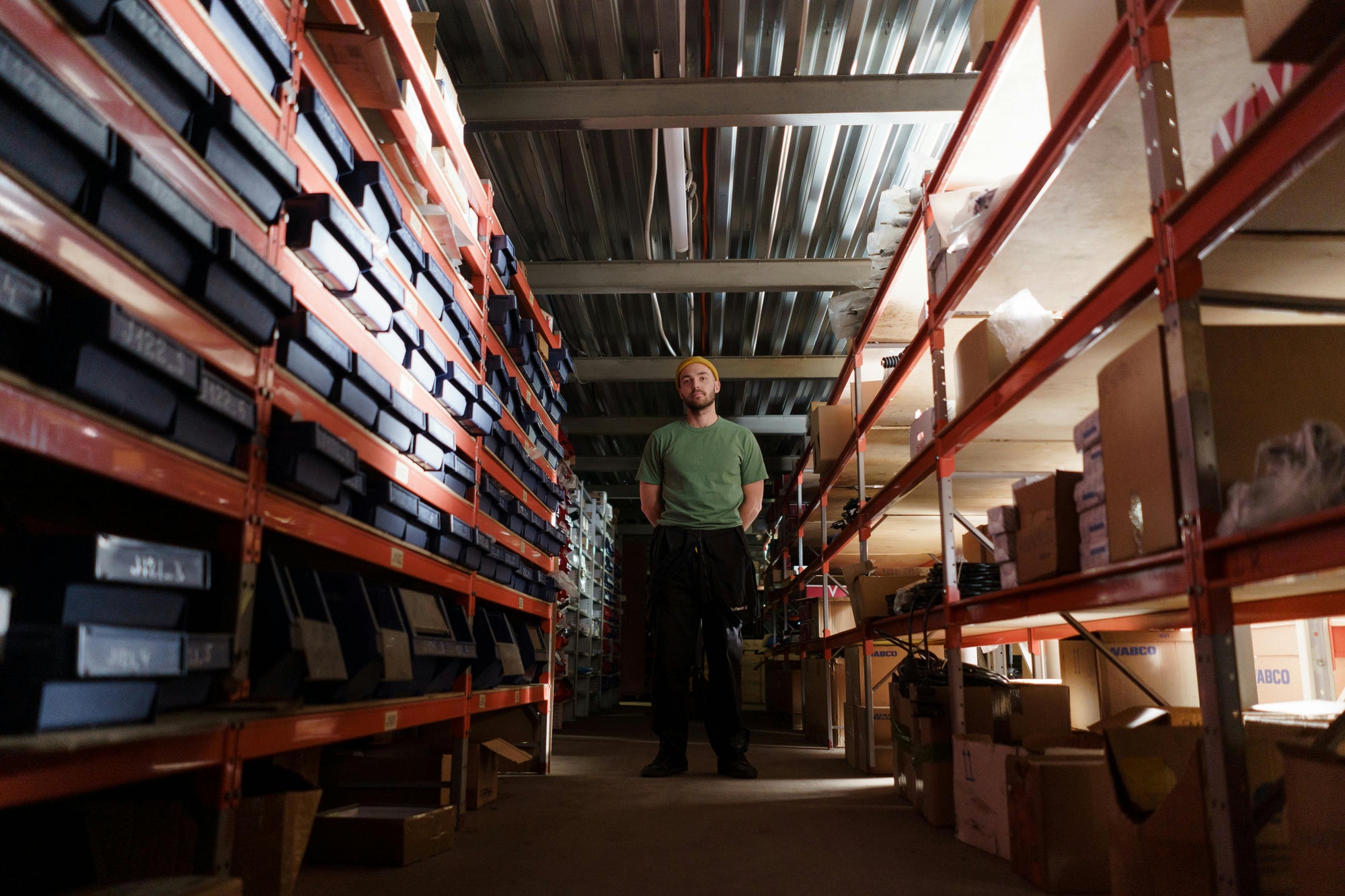When arranging your storeroom, it is critical to choose the correct storeroom rack. Whether you intend to store heavy-duty industrial equipment, domestic goods, or office supplies, the material you choose for your racks will have a significant effect on durability, practicality, and aesthetics. Metal and wood racks are two of the most popular storage solution materials. Depending on your exact requirements, each material has unique pros and cons . Let’s take a look at the features, advantages and disadvantages of metal and wood racks which will help you make an informed decision when choosing storeroom racks.
Metal Racks

Common Materials
Metal racks are constructed from a variety of materials, including stainless steel, cold roll steel, and aluminum. These materials are known for their strength, durability, and versatility, making metal racks the preferred choice for applications requiring high-performance.
Uses
Metal racks are commonly utilised in warehouses, industrial storage facilities, and high-humidity environments such as basements and factories. They are perfect for storing bulky and heavy objects including machinery, inventories, and equipment. Metal racks are ideal for locations where structural integrity is needed.
Key Features
-
Durability: Metal racks are extremely durable and can resist wear and tear. They can withstand the pressures of heavy use, making them durable storage options.
-
High Weight Capacity: These racks are built to withstand heavy loads, which is important for industrial and commercial storage applications.
-
Resistance to Moisture: Metal racks, unlike wood, are impenetrable to moisture, mould, and pests, making them the preferred choice for humid or damp locations.
Wood Racks
Common Materials
Plywood, High-Density Fiberboard (HDF), and Medium-Density Fiberboard (MDF) are commonly used materials for wooden racks. These materials are chosen for their aesthetic attributes and simplicity of customisation, making them ideal for indoor settings such as houses and businesses.
Uses
Wooden racks are often utilised in home storage areas, offices, and retail displays. Their natural appearance and customisability make them ideal for settings where aesthetics are important, such as living rooms, bedrooms, and boutique stores.
Key Features
-
Aesthetic Appeal: Wood has a natural, pleasant appearance that suits most home and workplace designs. It’s a wonderful idea for creating a welcoming and organised environment.
-
Customisation: Wooden racks can easily be painted, stained, or moulded to fulfil specific design requirements. This makes them appropriate for special storage requirements.
-
Affordability: Wooden racks are usually less expensive than metal racks, making them an appealing option for homeowners and small businesses.
Benefits and Drawbacks of Metal Racks
Benefits
-
Durable and Long Lasting: Metal racks are extremely durable and long-lasting, making them an excellent choice for storing heavy items.
-
Support Heavier Loads: Due to their sturdy design, metal racks can carry large weight, which is vital for industrial storage.
-
Resistance to Pest, Mould, and Moisture: Unlike wooden racks, metal racks are resistant to pests such as termites and will not bend or decay in humid situations.
-
Low Maintenance: Metal racks are often easier to clean than wooden racks.
Drawbacks
-
More Expensive: Metal racks can be more expensive than wooden racks, particularly high-quality alternatives made of stainless steel or aluminum.
-
Heavier: Metal racks are durable, but their weight makes them more difficult to transport or reconfigure.
-
Risk of Rust: If not properly coated or maintained, metal racks, particularly those constructed of steel, can rust, especially in humid areas or salt air environments.
-
Industrial Appearance: Metal racks may not always complement home or workplace design, particularly in places that require a warmer or more natural appearance.
Benefits and Drawbacks of Wood Racks
Benefits
-
Natural and Warm Aesthetic: Wooden racks offer a pleasant, welcoming atmosphere to any room, making them ideal for living rooms, bedrooms, and offices.
-
Customisation: Wood is easy to work with, so racks can be painted, stained, or even made to fit specific areas.
-
Affordable: Wooden racks are typically less expensive than metal racks, making them a more cost-effective storage choice.
-
Lightweight and Easy to Move: Wood is lighter than metal, making it easier to move and reposition, particularly in small storage spaces.
Drawbacks
-
Susceptible to Termites and Pests: If wooden racks are not properly treated or maintained, they can attract termites and other pests, particularly in humid locations.
-
Can Break in Humid Environments: Excess moisture or humidity makes wood more prone to cracking or deterioration.
-
Lower Weight Capacity: Because wood racks cannot sustain as much weight as metal racks, they are not suitable for industrial or heavy-duty storage applications.
-
More Maintenance Required: To avoid damage and increase the life of wooden racks, they must be polished, sealed, and repaired on regular intervals.
Choosing the Right Material for Different Storage Needs
The decision between metal and wood racks is mostly determined by the intended function and environmental considerations of the storage space. Here’s a breakdown of which material is ideal for each need:
-
For Heavy-Duty Industrial and Warehouse Use
Metal racks are the top choice for heavy-duty industrial and warehouse applications. Their capacity to withstand huge weights and prevent moisture makes them excellent for usage in harsh situations such as warehouses and industrial storage areas.
-
For Home Storerooms and Office Storage
For home and office storage, wooden racks are a more visually appealing and cost-effective option. They are ideal for home or office use, where racks do not need to support high loads and flexibility is essential.
-
For High-Humidity Environments
Metal racks are ideal for high-humidity locations, such as basements and factories. Unlike wood, metal does not distort, decay, or attract bugs in humid environments.
-
For Cost-Conscious Buyers Looking for Budget Storage
Wooden racks are often less expensive than metal racks, making them an excellent choice for individuals on a budget. They’re also great if you need a quick, low-cost solution for simple storage needs.
PG Storage Systems: Reliable, Durable, and Customisable Boltless Storeroom Racks
At PG Storage Systems, we understand that every storage need is unique. Our boltless storeroom racks are designed to provide stability, durability, and flexibility, making them the perfect solution for residential, retail, office, and warehouse storage.
Crafted with high-quality epoxy-coated metal, our storage racks in Singapore are resistant to rust and can hold up to 300kg UDL per shelf, ensuring long-term reliability. Let us help you find the perfect storeroom rack in Singapore! Book a free onsite consultation today for precise measurements and tailored recommendations.



